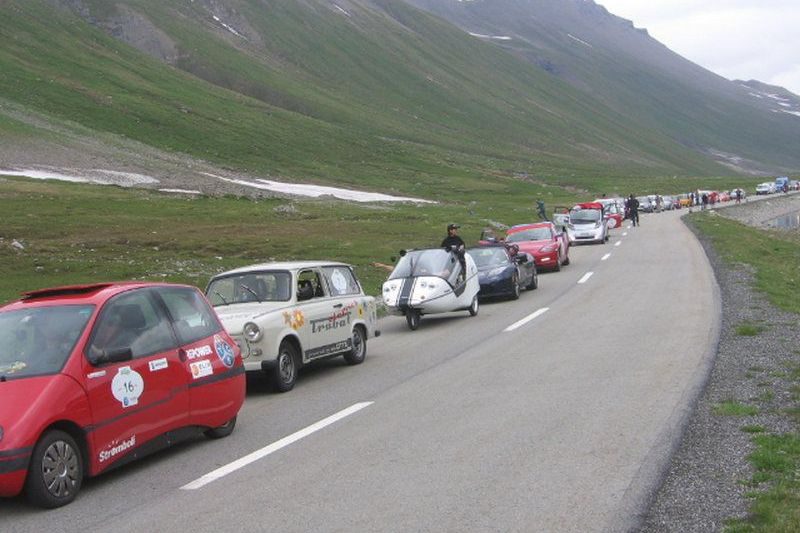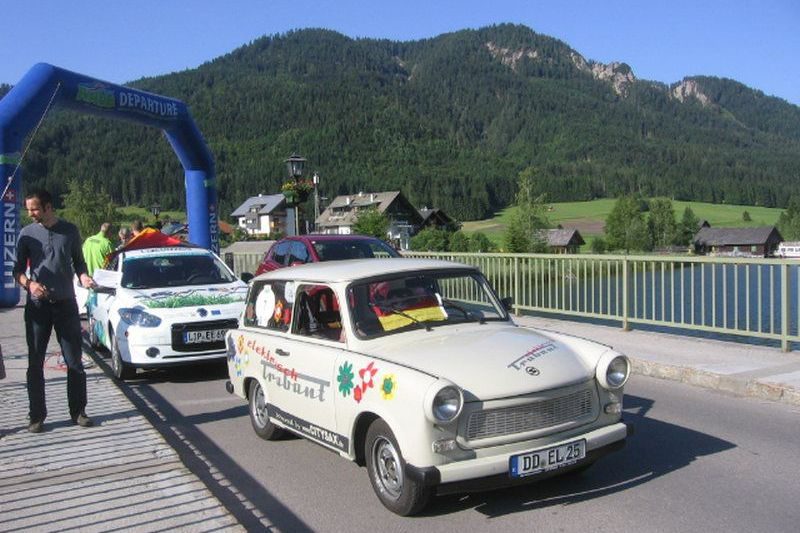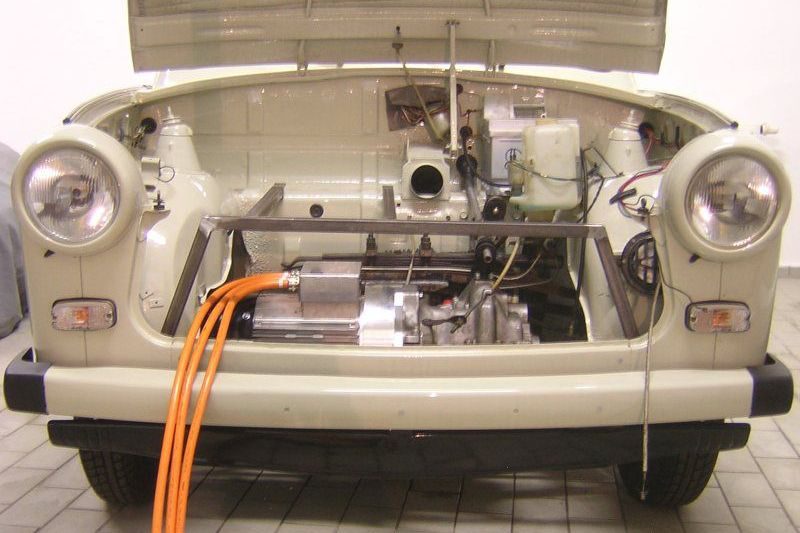Trabant – The Icon, Rebooted
Author: Susanne Spotz
It’s decades since the last example rolled out of the factory, but they are still a presence on Germany’s roads. We are of course talking about that East German icon, the Trabant. Matthias Bähr from Dresden specializes in conversions of this special kind.
Bähr himself undertook the journey of a lifetime in 2015 with his 1964 Trabi, taking part in the eTour Europe. According to the organizers, this tour is the longest and most challenging rally for electric vehicles, period. The twelve teams from Spain, the Netherlands, Austria, Czech Republic and Germany covered 4,500 kilometers in ten days. The biggest hurdle came during an Alpine stage, on the descent from Grossglockner. “The drum brakes ended up melting the plastic hub caps,” Bähr recalls, chuckling. Disk brakes replaced the drum brakes for the rest of the tour.
Each car is individually appraised before its transformation
Taking ones treasured Trabi to Bähr’s Dresden workshop for refit costs 18,000 euros. But it is also possible to “do it yourself;” Bähr can alternatively provide the assembly kit and full instructions for 11,000 euros. “Of course, we offer our advice and support from the very beginning. Each car is a unique specimen and needs an individual evaluation.” There is no welding work for the customer, and all components are delivered, explains Bähr. The control system is already set up, he stresses. The installation guide helps with the transformation.
“But firstly, everything in the engine compartment needs to go. Then the new equipment can start going in”, Bähr explains the first stages of the refit. Under the Trabi’s hood go an electric motor, control system, DC-AC transformer, lighting system, electric heater, accelerator pedal, a lithium iron phosphate battery, and the battery management system.
The electric Trabant can go 100 kilometers, at 100 km/h
The phenol resin engine hood now hosts a modern three-phase asynchronous motor, according to Bähr. With a peak performance of 38 HP and torque of 148 Nm, the Trabant accelerates to 100 km/h and thereby around the same top speed as the original. After approximately 100 kilometers, the environmentally-friendly Trabi will need recharging.
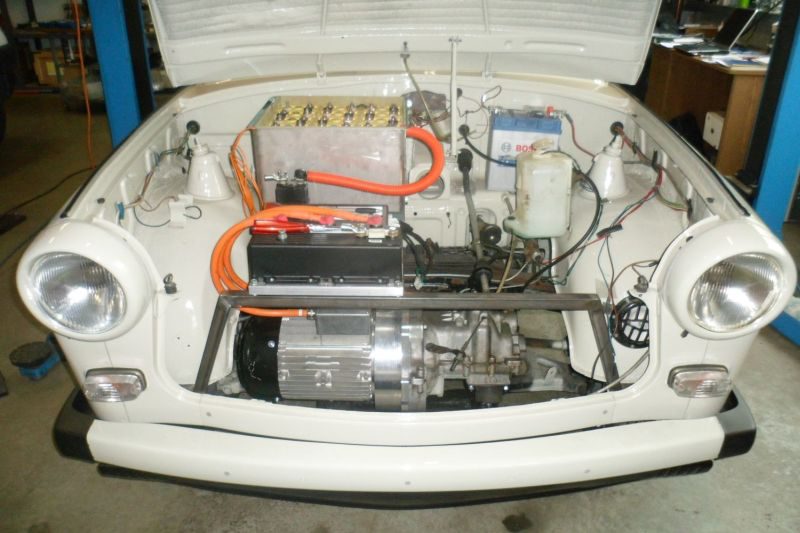
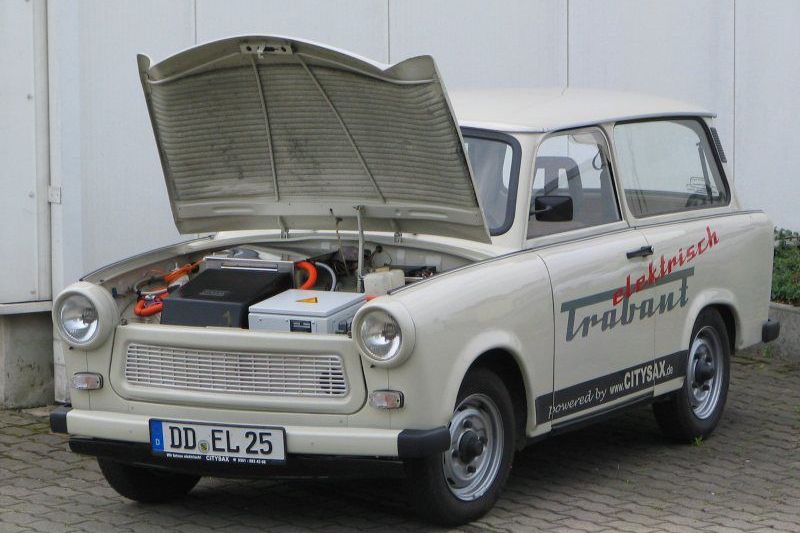
All vehicles that Bähr converts to electric in his workshop are then assessed in the Dresden branch of DEKRA. “The general inspection is in principle the same for every vehicle,” explains Andreas Richter from the DEKRA Competence Center E-Mobility. Initially, all mechanical components are tested. For electric vehicles, all electrical components are also tested. “As the Trabant is advanced in its years, there is no interface for the HU adapter diagnostic system,” explains Peter Galow, Head of the DEKRA Dresden Technical Test Facility.
Components are visually inspected and tested. Wiring harnesses, plug connections and insulation are all examined carefully by the test engineer. In newer electric vehicles, special attention is paid to the high-voltage technology. “For the Trabi, the requirements are much lower,” explains Galow. The inverter-controlled three-phase motor of the Trabi generates 13 kW. For comparison: The Tesla S, which Bähr’s company offers as a rental vehicle, puts out 244 kW.
Before Bähr began converting the “Plastebomber” (plastic bomber), as Trabants are jokingly referred to, he launched his own electric vehicle. Back in 2009, he and his team unveiled the electric-powered Citysax, a refitted Chevrolet Matiz. By 2011, 23 units had rolled out of the workshop. “Once we had refitted the first car, we had two visits on our list. We went to the ######### in order to acquire registration, and to testing organization DEKRA,” explains Bähr. The vehicle had to be inspected. DEKRA was our partner from day one, emphasizes Bähr. Each step was supported and assessed by the testing organization. “When a test engineer saw that the battery was located too close to the fender, we had to rebuild,” he says. The crumple zone would have been too small otherwise. Ultimately, the car fulfilled all regulations and requirements, and was permitted to take to the road. But Bähr discontinued production of the Citysax – competition was too fierce. The big car manufacturers eventually turned their attentions to the electric market, and in 2011 the last Citysax rolled out of the workshop. From then on, Bähr has specialized in conversions.
Bähr is convinced that electric mobility will prevail. But it could happen quicker, he complains. He has had success with his conversions, and the demand is there. The recent 60th jubilee of the “Stinker” – another nickname of the Trabant – is certainly another factor in his success.
